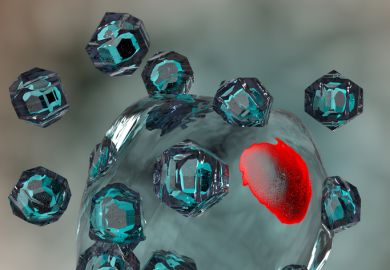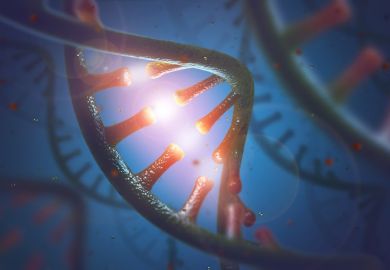One criticism that is sometimes levelled at ab initio molecular orbital (MO) calculations is that the chemical understanding is obscured by the numbers.
For this reason, since the dawn of quantum mechanics numerous more chemically intuitive methods have been developed, ranging from the simple bond and lone pair model of Lewis (the ancestor of Gillespie's valence shell electron pair repulsion model) to valence-bond (VB) theory (Heitler and London), the hybrid orbital approach of Pauling, resonance theory (Pauling and Wheland) and, more recently, Richard F. W. Bader's "atoms in molecules" approach.
Another important development was the work of Per-Olov Löwdin, who showed in the 1950s that a set of "natural" orbitals can be obtained as eigenfunctions of the electronic density matrix, with these orbitals having the advantage (over an arbitrarily chosen atomic orbital basis set) of being intrinsic to the molecular electronic wavefunction and leading to the most rapidly convergent expansion of the electron density and other one-electron properties.
In this book, Frank Weinhold and Clark Landis give a detailed account of the application of localised natural atomic orbitals (NAOs), natural bond orbitals (NBOs, which are the two-centre, diatomic equivalents of NAOs) and natural resonance theory (NRT), across the periodic table: from organic chemistry to main group molecules and transition metal complexes.
A central theme is the description of chemical bonding from a donor-acceptor perspective, using perturbation theory (based on natural orbitals) to aid the visualisation and understanding of the structures, stabilities and reactivities of molecules and supramolecular complexes. The authors are both experts in the development and application of NBO analysis, and many examples presented are taken from their own research.
After a brief historical introduction to the quantum mechanics of atoms and molecules, the natural orbital/donor-acceptor methodology is described. The second chapter deals with electrostatic and ionic bonding, but the largest part of the book (chapter three is more than 0 pages long) is concerned with the bonding in molecules of the s and p block elements. Topics covered here include covalent and polar covalent bonding, conjugation and aromaticity, hyperconjugation, hypervalency ("electron-rich" molecules) and hypovalency ("electron-deficient" molecules).
The fourth chapter is concerned with molecules of the transition metals, including organometallic molecules, co-ordination compounds and metal-metal bonded species and clusters. The wealth of non-covalent interactions (intermolecular forces) are discussed in the final chapter on supramolecular bonding, which includes a treatment of the relative importance of electrostatic forces, resonance and partial covalency in hydrogen bonds and charge transfer complexes. There are useful worked examples and footnotes and references to the original literature, as well as three appendices on definitions of methods, chemical periodicity and units.
For many systems the NBO/ donor-acceptor approach is undoubtedly a useful way of analysing MO calculations, and localised bonding approaches can provide valuable insights into molecular structure and reactivity. I am less convinced, however, by some of the applications of electron-deficient compounds, especially borane clusters, where localised bonding pictures, such as Lipscomb's styx model and the NBO analysis become rather cumbersome, especially for highly symmetric molecules.
The tone adopted by the authors, when comparing MO and more localised treatments, tends to be confrontational, probably reflecting the unfortunate schism that has arisen over the years between some advocates of molecular orbital and valence-bond (or related) approaches. For example, the statement that "we can conclude that the NBO donor-acceptor picture is inherently more accurate than that based on the Huckel tight-binding approximation" ignores the fact that the Huckel model, which allows semi-quantitative treatment of planar hydrocarbons for very little computational effort, works so well despite its simplicity.
At just under 750 pages, Weinhold and Landis have certainly produced a weighty tome. I would not agree, however, with the description of the book as "the first comprehensive overview of modern chemical valency and bonding theory" because its emphasis is heavily on the side of the NBO approach.
I believe that this is a very good introduction to NBO/ donor-acceptor analysis and a useful addition to the bookshelves of computational chemists. In my opinion, this text will be of use primarily to more experienced researchers working in the field of electronic structure calculation.
Roy Johnston is reader in computational chemistry, Birmingham University.
Valency and Bonding: A Natural Bond Orbital Donor-Acceptor Perspective
Author - Frank Weinhold and Clark Landis
Publisher - Cambridge University Press
Pages - 749
Price - £60.00
ISBN - 9780521831284
Register to continue
Why register?
- Registration is free and only takes a moment
- Once registered, you can read 3 articles a month
- Sign up for our newsletter
Subscribe
Or subscribe for unlimited access to:
- Unlimited access to news, views, insights & reviews
- Digital editions
- Digital access to THE’s university and college rankings analysis
Already registered or a current subscriber? Login



